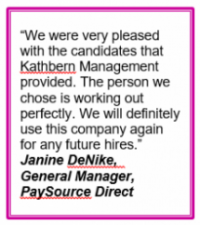(Reading Time: 6 minutes)
How to set yourself up for a successful second act (or third or fourth…)
You’ve worked hard and built a thriving going concern with revenue to spare. You’ve achieved all that you want to achieve, and now it’s time to move on. Maybe you want to start something new, maybe you want to travel, or maybe you just want to retire.
Seems simple, right?
If you’re an entrepreneur or business owner, it’s never as easy as it seems. But, if you start planning your exit strategy sooner rather than later, you can engineer a successful exit that will ensure you have the resources for whatever’s next.
 To sell or not sell?
To sell or not sell?
You may think you have to sell, but there is an alternative. You could reorganize your company so that someone else could carry on with the business while you ride into the sunset as the continual owner until your death, at which point it would transition according to your will.
It could be your employees or a family member that takes over. You could even bring a hired gun CEO to run things; you’d give them a great salary and bonus so they never want to leave, and create a structure that’s fair to everyone.
The key is making sure that no party feels like they are being short-changed. It can take a lot of creative effort to organize, but if you do it right, you could set things up so that you as the owner continue to receive a nice share of the profits without the headaches of the day-to-day.
Keeping the business is not without its downsides. You still have risk. Say you own an HVAC business, and somebody comes up with a completely new way to heat and cool buildings and suddenly you don’t need HVAC companies anymore…that’s the type of thing you don’t see coming.
It’s happened.
If you owned a restaurant empire and were sailing along beautifully in late 2019, you wouldn’t have seen the pandemic coming. That changed the world. If you have all your assets in one basket, you’re never completely free from the risk of something happening that you just don’t see coming.
So that’s the choice, you either set up an arrangement where you continue to own your company but still get the freedom of not running it or sell it today on some basis.
The reinvestment problem
The value of selling is that you can take your profit and diversify across many different asset classes so that you’ve mitigated your risk if any one thing blows up. But – and it’s a big caveat – you do need to understand the tax implications and potential earnings from reinvesting if you do choose to sell.
So, you’ve given a lot back to the government, then you have a reinvestment problem. Where do you park what’s left? If you want to invest in something super safe, you might go with government bonds at 2% (which are taxable) or in a savings account with a low return. When you look at your net income after that, you might wonder how you went from $500,000 a year when you owned your business to $100,000 a year after selling.
But that’s the downside of low risk. It comes with a very low return. In the risk/reward calculus, there’s a price to be paid for low risk. When you take on a lot of risk, you get rewarded or lose your shirt. If you want low risk, there’s a low return for that.
When you were working before – perhaps logging long hours – you were carrying a lot of risk…but with that came more reward. So, there are pros and cons to both options. You have to decide what you are most comfortable with.
Sell your company, don’t give it away
Seems obvious. But it’s not. If you do decide to sell, make sure you do it right. Here are some tips for success.
Start early and plan ahead
It will take at least 12 months to sell your company. Make sure you have the resources in place so you can take the time to get the right price.
Get your house in order
Maybe you’ve lost your best customer, or a key supplier is suddenly ghosting you. This is the worst time to sell, even if it seems like a solution. You want to leave the floor at the top of your game, just like any athlete or entertainer. Otherwise, you’re just giving your company away.
Take the time to make sure your business is shipshape. That could mean diversifying your customer base or supply chain so you’re not beholden to a single entity, or cutting costs and increasing revenue in order to maximize EBITDA.
Think about your company’s name – is it the same as yours? Maybe you should rebrand so it’s more marketable when you’re gone. You want to make it so it’s not all about you.
If the company owns real estate, you may want to separate the business from the real estate, so they are held in different entities. That way you could sell the business but retain the real estate, even renting the building out to the new owner, another way to disentangle yourself from the business while continuing to earn revenue.
Finally, think about your management team and customers – are there contracts in place to ensure the stream of business will go on after you’re gone? This is what a new owner is buying, after all, and you want to make sure those don’t disappear when you do. And make sure that your employees are taken care of, with bonuses if they stay until the transaction is completed.
Negotiate skillfully
Understand the value of your business, not just to you, but to the buyer, after the sale.
You might have a net income of $4 million a year, and value the company accordingly, however, a buyer might be able to fold in your business to their existing one, thereby eliminating some costs and suddenly your former business is earning $6 million a year. Negotiate with the understanding that while your business may be worth $4 million to you, it may be worth $6 million a year to the buyer. Don’t sell yourself short.
Hire a reputable consulting firm
It’s a lot to navigate. That’s why you shouldn’t try to do it yourself. Hire a reputable M&A consulting firm to advise you through the process.
Treat it as a sale, even if it’s to family
Maybe you want to pass the company on to one of your kids. It’s still a sale, it’s just a different kind of a sale. It’s worth going through these steps to ensure you have something to live on, and your kids aren’t over- or underpaying for the business.
Or maybe, you can work out some arrangement where they run the business and you continue to share in the profits like we talked about above. The point is to set out a plan for transition that results in an arrangement that’s fair for all sides.
Larry Smith is the founder and president of Kathbern Management, an executive search firm based in Toronto. Kathbern helps companies find the executives and senior managers who not only have the experience and credentials to fulfill their responsibilities, but also have the emotional and “fit” requirements that will enable them to be successful in a particular environment. Kathbern simplifies the process and, through deep research, brings more and better candidates forward than would ever be possible through a do-it-yourself passive advertising campaign.
Learn more at www.kathbern.com, or contact us today for a free consultation about your key person search. Follow us on LinkedIn, Facebook, and Twitter.

